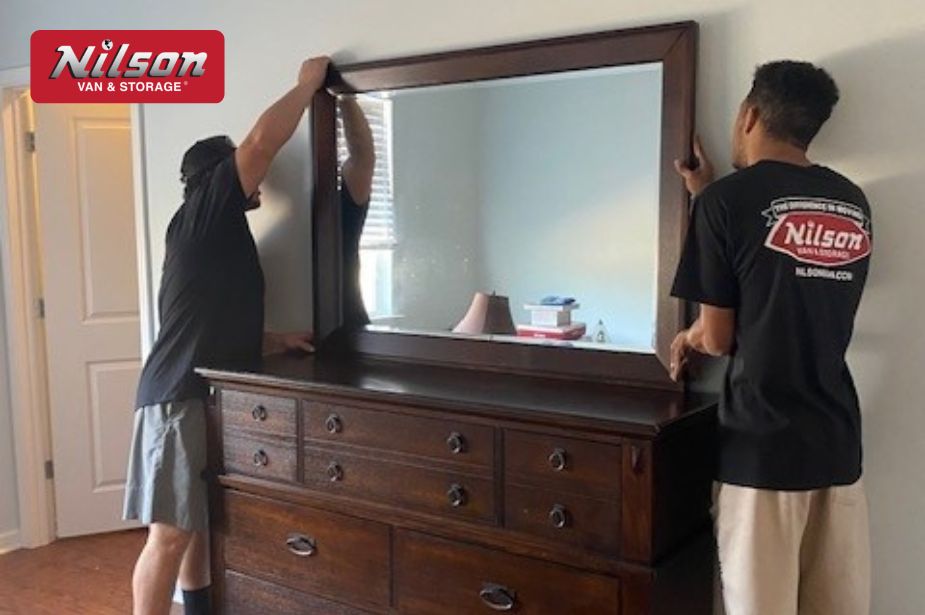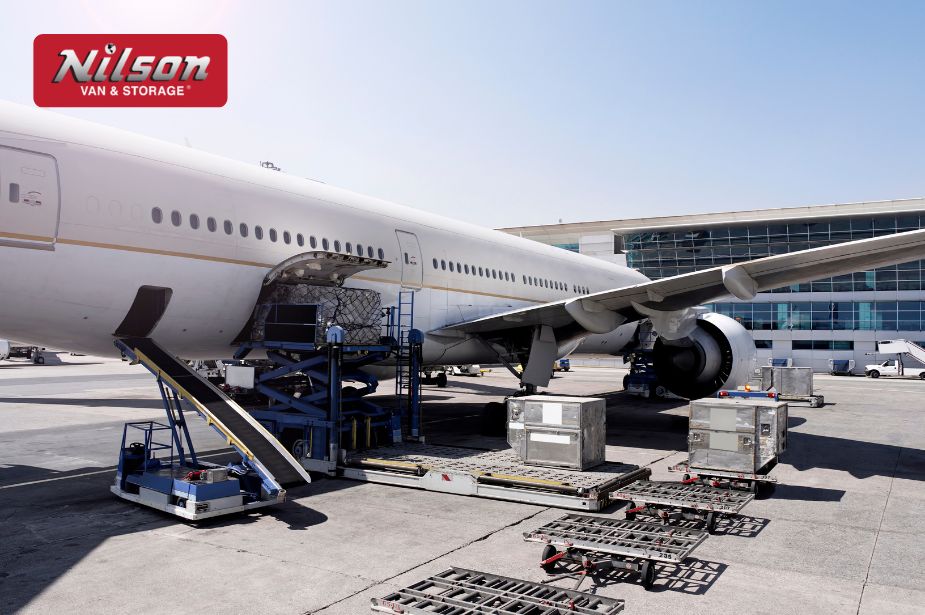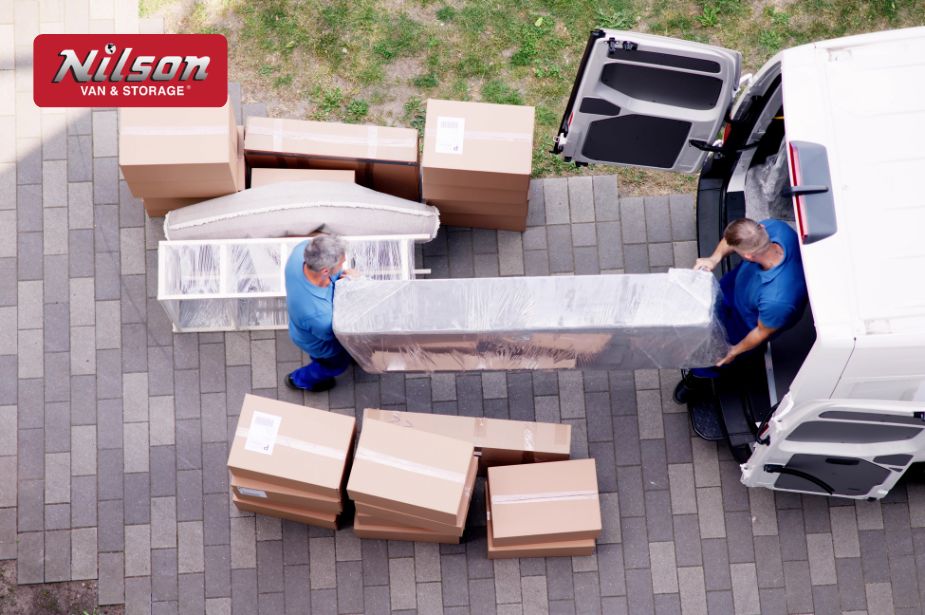
Moving Household Goods Efficiently: A Complete Guide
Moving household goods can be one of the most exciting yet challenging experiences a family faces. Whether you are relocating across Columbia, SC, or transitioning from Charleston to Savannah, the process requires careful planning, organization, and execution. A successful move isn’t just about putting things in boxes—it’s about ensuring your belongings arrive safely, on time, and ready to be part of your new home.
At Nilson Van and Storage, we have helped countless families in Myrtle Beach, Sumter, and beyond make this transition smoothly. From the moment you start sorting through your rooms to the final stage of unpacking, every step is an opportunity to streamline the process. By following proven strategies and working with experienced household goods moving services, you can reduce stress, control costs, and avoid the common pitfalls that turn moving day into a headache.
This guide walks you through the most effective ways to prepare, pack, and coordinate your move, so you can feel confident from start to finish. Whether you’re hiring the best household goods movers or combining professional help with your own packing efforts, the insights here will help you get organized, stay on schedule, and protect the items that matter most.
Moving Household Goods the Smart, Low-Stress Way
Relocating to a new home is more than simply transporting furniture and boxes—it’s about creating a plan that keeps you in control. Moving household goods effectively starts with understanding your options and setting realistic expectations. Choosing between a full-service move, a hybrid approach, or a completely DIY relocation depends on your timeline, budget, and the complexity of your household inventory.
Mapping Your Approach
Begin by identifying whether you want to handle certain parts yourself or let a household goods moving company manage everything from packing to delivery. A hybrid approach is popular with families who want professional packing for fragile or high-value items while managing easier tasks themselves. This can help lower the cost to move household goods while still ensuring professional handling where it matters most when moving household goods efficiently.
Building Your Timeline
Once you know your approach, create a clear moving schedule. An eight-week plan is ideal for most residential moves, giving you enough time to book household good movers, gather packing materials, and prepare your home for loading day. This schedule should include milestones for decluttering, confirming valuation options, and arranging household shipping if you have items going to different locations as part of moving household goods.
Setting Up Your Move Command Center
To stay organized, designate one place—either a folder, binder, or digital app—where you store all moving documents, receipts, and contact details for your household items movers. Keep a printed copy of your inventory list handy for reference on moving day. This not only helps you track your belongings but also ensures your household goods moving services have accurate details to coordinate delivery.
Planning & Inventory for Household Goods Moving
A well-planned inventory is the backbone of a smooth move. When moving household goods, knowing exactly what you have and where it should go makes packing faster, loading safer, and unpacking more efficient. This step is about more than creating a checklist—it’s about building a roadmap for your belongings.
Creating a Room-by-Room Inventory
Start by walking through each room with a notebook or inventory app. List each item, noting its condition and any special packing needs. For large or fragile pieces, take photos to document their pre-move state. This practice helps household goods moving companies handle items correctly and gives you reference material if you need to verify delivery condition later during moving household goods.
Labeling and Color-Coding
Develop a labeling system that works for your household. Assign a color to each room, then label boxes with that color plus a box number and brief description. For example, a box from the kitchen might be labeled “Kitchen – Blue – #5 – Glassware.” When household good movers unload at your new home, they can place each box in its designated room without confusion.
Decluttering Before Packing
One of the most effective ways to reduce the cost of moving household goods is to move less. Go through each room and decide what to sell, donate, or discard. If you have bulky furniture or appliances you no longer use, selling them before the move not only saves space but can also offset moving costs. Household shipping for fewer items means less packing, less lifting, and more manageable transport household goods logistics.
Using Digital Tools for Tracking
Consider using spreadsheet templates or moving apps to maintain your inventory. Attach digital photos to each entry, record box numbers, and update the list as you pack. Share a copy with your household goods moving services so they have full visibility. The best household goods movers often appreciate working with organized clients, as it speeds up both loading and delivery in the process of moving household goods.
By committing to a structured plan, keeping accurate records, and working closely with your household goods moving company, you’ll not only safeguard your belongings but also make every step of the relocation process far more efficient.
Packing Like a Pro: Room-by-Room Techniques for Household Items Movers
Packing is one of the most time-consuming and critical steps in moving household goods. How well you prepare each room will determine how smoothly loading, transport, and unpacking go. Proper techniques protect your belongings, help household good movers work efficiently, and minimize the risk of damage.
Kitchen & Pantry Essentials
The kitchen demands special attention due to its mix of fragile, sharp, and perishable items. Wrap dishes and glassware individually, using padded paper or bubble wrap. Small appliances should be cleaned, secured, and packed in their original boxes if possible. Label each box with “fragile” and the room destination to assist household goods moving services in handling them with extra care. This preparation can also reduce the cost of moving household goods by avoiding last-minute replacements for broken items.
Living Room & Décor Protection
The living room often contains electronics, artwork, and decorative items that require careful handling. Televisions should be packed in TV-specific cartons, and cables stored in labeled bags. Artwork and mirrors benefit from corner protectors and padded wrapping. The best household goods movers know these pieces require upright transport, which is why labeling and inventory accuracy are essential when moving household goods.
Bedrooms & Closet Organization
Clothing can be packed in wardrobe boxes for easy transfer from closet to truck. Bedding should be stored in clear plastic bags to protect against dust and moisture during household shipping. Jewelry and small valuables should always be kept with you rather than loaded on the moving truck. This ensures peace of mind and keeps your transport household goods process streamlined, especially during moving household goods over long distances.
Home Office & Electronics
Computers, monitors, and accessories should be backed up digitally before packing. Each cable should be labeled to simplify reassembly in your new home. Office documents, especially those with sensitive information, should be stored in a secure folder and transported personally rather than with other household items movers, ensuring their safety when moving household goods.
Garage, Outdoor, and Specialty Items
Garages contain tools, outdoor furniture, and equipment that may require disassembly. Clean grills, drain fuel from lawn equipment, and avoid packing prohibited materials. If you have large specialty items like safes or exercise machines, communicate their size and weight to your household goods moving company early to ensure proper equipment and crew planning.
Read also: Top 5 Things to Keep with You When Moving Separately
Cost to Move Household Goods: What Drives Price (and How to Lower It)
Understanding the cost to move household goods is essential for budgeting your relocation. Several factors influence pricing, and knowing them in advance allows you to make smart choices that can reduce your final bill.
Key Factors That Influence Price
The most common variables include the weight or volume of your shipment, the distance between your current and new home, and the level of service you choose. Dates also matter—moves during peak seasons or weekends often cost more. Accessibility challenges, such as narrow streets or stairs, can also affect the cost of moving household goods. Additional services like packing, crating, furniture assembly, or valuation coverage will increase your total, so it’s important to determine what you truly need before booking household goods moving services.
Valuation, Packing, and Add-On Choices
While full-service packing ensures professional handling, it may not be necessary for every item. Consider packing your non-fragile belongings yourself while leaving delicate or high-value items to household good movers. Valuation options are also worth discussing with your mover to ensure protection without paying for coverage you don’t require. These choices directly affect how much it will cost to move household goods without compromising safety.
Comparing Quotes and Understanding Estimates
When working with a household goods moving company, request detailed quotes that list all charges clearly. For local and intrastate residential moves in South Carolina, Nilson Van and Storage provides non-binding estimates, meaning your final bill is based on the actual weight and services provided. This transparency helps you avoid surprises and gives you flexibility to adjust your moving plan while moving household goods.
Practical Ways to Save Money
If your schedule allows, book during off-peak times, such as midweek or mid-month. Reducing shipment weight by decluttering before packing also makes transport household goods more affordable. Choosing a hybrid service—where professional movers handle only specific tasks—can give you the expertise of the best household goods movers without the cost of a full-service package.
By understanding these factors and working closely with experienced household items movers, you can strike the right balance between quality service and cost efficiency. Planning, communication, and flexibility remain the keys to keeping your move smooth and budget-friendly when moving household goods.
Read also: Moving Interstate How to Plan and Choose the Best Movers
Choosing the Best Household Goods Movers
Selecting the right team for moving household goods is one of the most important decisions you’ll make during your relocation. The quality of your movers directly impacts the safety of your belongings, the efficiency of your schedule, and even the overall cost to move household goods. Whether you’re hiring a local crew or a household goods moving company for a long-distance relocation, due diligence pays off.
Vetting for Experience and Reputation
Before booking, take time to research potential household goods moving services. Read customer reviews, check their track record with organizations like the Better Business Bureau, and confirm they are licensed for the type of move you need. Experienced household good movers have proven systems for packing, loading, and transport, which reduces delays and protects your items from damage.
Asking the Right Questions
A professional moving consultation should feel collaborative, not rushed. Ask about their process for inventory management, packing methods for fragile items, and the options they offer for valuation. Clarifying these points early ensures you’re working with one of the best household goods movers, rather than a service that leaves you with hidden costs or substandard handling during moving household goods.
Understanding Service Scope and Specialties
Not all movers offer the same range of solutions. Some specialize in household shipping for partial loads, while others focus exclusively on full-service moves. Make sure the household goods moving company you choose is equipped to handle your specific needs—whether that’s large furniture, specialty equipment, or an entire home. If you require short-term storage, confirm availability and understand the conditions before booking.
Spotting Red Flags Early
Avoid companies that refuse to provide written estimates, ask for unusually large deposits, or cannot explain their valuation coverage clearly. A trustworthy partner in transport household goods will be upfront about costs and timelines. With Nilson Van and Storage, our clear pricing and non-binding estimates for local and intrastate South Carolina moves give clients peace of mind from the start of moving household goods.
Read also: Top Moving Companies to Another State from Savannah
Transport Household Goods: Local, Long-Distance, and International
The logistics of transporting your belongings depend on the distance, the size of your shipment, and the services you choose. Moving household goods locally in South Carolina requires different planning than coordinating an interstate or overseas move. Understanding these differences will help you choose the right approach and avoid unnecessary delays or costs.
Local and Intrastate Moves in South Carolina
For families in Columbia, Myrtle Beach, Charleston, Sumter, and Savannah, Nilson Van and Storage offers non-binding estimates for residential moves within the state. This means your final cost to move household goods is based on actual weight and services rather than a fixed figure. Local moves often allow for more flexibility in scheduling and can be completed within a single day, but they still require precise packing and labeling to ensure efficient unloading.
Interstate and Cross-Country Transport
Long-distance household goods moving services must coordinate carefully to meet delivery windows. This often includes load tracking, scheduled checkpoints, and clear communication between you and your household goods moving company. Interstate moves are typically priced by weight and mileage, so reducing shipment volume can significantly lower the cost of moving household goods. The best household goods movers will also provide a realistic delivery window to help you plan your arrival.
Household Shipping for Partial Loads
If you don’t need to move an entire home, household shipping may be the most efficient option. This service is ideal for smaller quantities or when you’re sending specific items to another location. It can also be combined with standard transport household goods services for a hybrid solution that saves money and time.
Specialty Items and Extra Care Needs
Certain possessions—such as pianos, antiques, fine art, or oversized equipment—require unique handling. Inform your household goods moving company about these items early so they can prepare specialized packing and secure transport methods. Experienced household items movers know how to protect these valuables during loading, transit, and unloading, ensuring they arrive in the same condition they left.
By understanding the nuances of local, interstate, and specialized services, you can choose the most efficient method for moving household goods while keeping costs and timelines under control.
Read also: Switzerland to USA: Your Commercial Moving Company to Charleston
Move-Day Execution for Household Goods Moving
Move day is the culmination of weeks—or even months—of preparation. The way you handle this day can have a significant effect on how smooth the process of moving household goods will be. A clear plan, good communication with your movers, and attention to detail can make the difference between a stressful day and a well-coordinated relocation.
Organizing the Load and Pathways
Before the crew arrives, ensure pathways are clear inside and outside your home. This allows household good movers to load items without unnecessary delays or hazards. Protect floors, doorways, and high-traffic areas to avoid accidental damage. Organized staging areas for boxes and furniture will help household goods moving services load the truck more efficiently, which can indirectly lower the cost to move household goods by saving time.
Keeping Essentials Accessible
Your essentials kit should include items you’ll need immediately upon arrival—such as toiletries, medications, important documents, chargers, and a change of clothes. Keeping these separate from your main shipment ensures they’re not lost in the shuffle of transport household goods and prevents the inconvenience of unpacking boxes prematurely while moving household goods.
Coordinating with the Moving Crew
Establish a point of contact with your household goods moving company crew leader. Walk through your home together, pointing out fragile items, high-priority boxes, and any special handling requirements. This proactive communication helps household items movers work efficiently and ensures they understand your expectations from the start.
After the Move: Unpack, Organize, and Settle In
The work doesn’t end when the truck doors close and the crew departs. After moving household goods into your new home, unpacking and organizing are key steps to creating a comfortable living space. The first week sets the tone for how quickly you’ll feel settled.
Prioritizing Your First-Week Setup
Start with rooms that will make daily life easier. Bedrooms should be ready for sleeping, kitchens functional for basic meals, and bathrooms stocked with necessities. By unpacking these essentials first, you can gradually address other rooms without feeling overwhelmed. Household goods moving services that offer unpacking assistance can speed up this process, allowing you to enjoy your home sooner.
Reviewing Inventory and Valuation
Check your inventory list against delivered items. If anything is missing or damaged, notify your household goods moving company immediately. Review your valuation agreement to understand the resolution process. This step ensures accountability and safeguards your investment in the cost of moving household goods.
Disposing of Packing Materials Responsibly
Flatten cardboard boxes for recycling or donate them to someone else who may be transport household goods soon. Packing materials can be repurposed, and some of the best household goods movers even offer box take-back programs to help clients avoid clutter.
Why Choose Nilson Van and Storage in Columbia, SC (and Nearby)
Choosing the right partner for moving household goods can make all the difference in your relocation experience. Nilson Van and Storage combines decades of expertise with a customer-first approach, ensuring your move is handled with care and precision from start to finish.
Serving Multiple Locations with Local Expertise
We proudly serve families and individuals in Columbia, Myrtle Beach, Charleston, Sumter, and Savannah. Our team understands the unique needs of each market, whether you require local household goods moving or longer-distance transport household goods services. For local and intrastate moves within South Carolina, we provide non-binding estimates so your cost to move household goods reflects the actual weight and services used.
Flexible Services for Every Move
From full-service packing and loading to specialized handling for antiques, pianos, and artwork, our household goods moving company offers tailored solutions to meet your needs. If you only require assistance with certain aspects of your relocation, our hybrid service model can be a cost-effective way to work with the best household goods movers while keeping some tasks in your hands when moving household goods.
Customer-Friendly Policies and Secure Storage
We never charge cancellation fees, giving you the flexibility to adjust your plans without penalty. Our secure storage facilities offer short- and long-term options, ensuring your belongings are protected even if your move-in date is delayed. While our storage spaces are not climate-controlled, they are maintained to safeguard your items until you are ready for delivery.
By choosing Nilson Van and Storage, you gain a trusted partner committed to making the process of moving household goods as efficient, affordable, and stress-free as possible.
Wrapping Up
Moving household goods is a process that demands preparation, organization, and the right support. From planning your inventory to coordinating with household goods moving services, every step can influence the outcome of your relocation. Whether your move is local, long-distance, or involves household shipping, taking time to select the best household goods movers ensures your belongings are handled with care and efficiency.
By understanding the cost to move household goods, preparing your home for transport, and working closely with your household goods moving company, you can significantly reduce stress and stay within budget. Experienced household good movers not only protect your belongings but also guide you through the decisions that impact timing, safety, and expenses.
Nilson Van and Storage offers a complete range of solutions for families and individuals in Columbia, Myrtle Beach, Charleston, Sumter, and Savannah. With our transparent estimates, skilled crews, and no cancellation fee policy, we make transport household goods a straightforward and reliable process. The journey to your new home can be smooth and well-managed when you have the right partner for moving household goods.

FAQs - Moving Household Goods
Our Recent Articles
Stay informed and inspired with the latest tips, insights, and updates from the Nilson Van and Storage blog. From expert packing advice and moving checklists to stories about our commitment to the community, our articles are here to make your relocation journey smoother and stress-free. Explore our recent posts to discover how we’re redefining the moving experience for Columbia, Myrtle Beach, Charleston, Sumter, Savannah, and beyond.

Choosing the Best FF&E Installation Companies for Your Biz

Move to Germany from Columbia with Reliable Moving Company

